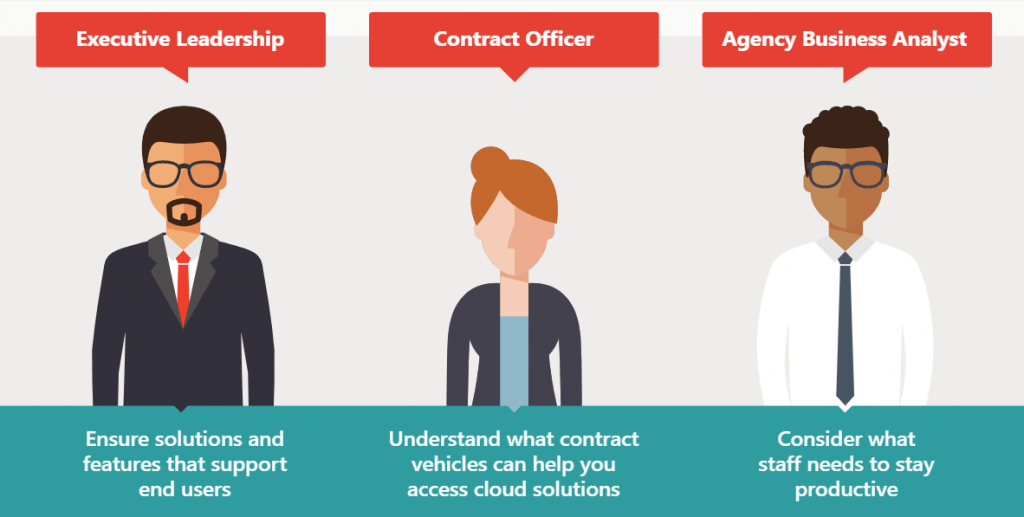The following is an excerpt from our newest ebook, “Public Sector Migration Handbook,” and stay tuned for more posts on this topic!
The last decade or so has seen technological innovation and development at an unprecedented pace. We’ve written about that quite a bit on this blog, but most of what we’ve covered pertains to private enterprises — organizations with far less regulatory and compliance requirements than their taxpayer funded counterparts.
In our next series of blogs, we’re going to focus on technology trends in the public sector and drill down on a few points that we think define the public sector digital ecosystem today. Our focus will be on the cloud and how government agencies and other public sector organizations can best utilize it.
The Benefits of Working from the Cloud
Government agencies — from the local to the federal level — have had their desire to move to the cloud challenged for years by stringent regulations, tightening budgets, and mission critical workloads.

Migration to the cloud can be an odyssey; however, the cloud comes with a multitude of perks that enable agencies to accomplish their mission more effectively and efficiently.
Notable perks of being in the cloud
Dialing up security: The cloud is well equipped when it comes to cybersecurity. It offers the latest and greatest in terms of data protection, with the added benefit of backing up and restoring data if the worst-case scenario occurs. With cybersecurity regulations in place, such as FedRAMP, government organizations can be confident that any data in approved cloud solutions will be safeguarded against cyber criminals.
Preventing shadow IT: Since the cloud enables better collaboration with colleagues and increases productivity on multiple devices, users are less likely to turn to consumer services or unapproved online tools that could put data and organizations at risk.
Faster access to innovation and improved citizen services: One of the biggest advantages of the cloud for public sector agencies is the ability to quickly spin up virtual machines to test and scale ideas, rather than face lengthy requests for new hardware or provisioning from on-premises servers. New services can be rolled out in days as opposed to months, or even years.
SEE ALSO: AvePoint’s FedRAMP Authorization Expands to 6 More Solutions
Increased agility: Since the challenges faced by healthcare.gov during its launch, government agencies have moved away from waterfall to agile development methodologies. These processes increase the agencies’ agility and are enabled by collaboration through the cloud.
Cost savings and data center consolidation: The on-demand pay for only what you use model of the cloud shifts capital costs to maintenance costs (CAPEX to OPEX), giving agencies greater flexibility with their IT budgets. The cloud also allows agencies to shed their physical datacenters and all the costs related to maintaining legacy infrastructures, which can result in millions of dollars in annual savings. The cloud is an essential tool that will allow federal agencies to hit their Federal Data Center Consolidation Initiative targets.

Data center consolidation: The on-demand pay for only what you use model of the cloud shifts capital costs to maintenance costs (CAPEX to OPEX), giving agencies greater flexibility with their IT budgets. The cloud also allows agencies to shed their physical datacenters and all the costs related to maintaining legacy infrastructures, which can result in millions of dollars in annual savings. The cloud is an essential tool that will allow federal agencies to hit their Federal Data Center Consolidation Initiative targets.
Increasing productivity from anywhere: Cloud tools empower staff in the field, such as warfighters, to access the data or services they need, when they need it. This means personnel can stay productive when they are away from their desk.
Assemble your cross department team
Before you take the first step in your migration journey, it is important to set expectations internally and understand the needs across the agency. That means making sure that all stakeholders across the organization, and especially security officers, are included in initial discussions.
For executive leadership at government agencies, it is important to ensure the solutions and features you are buying into will actually support end users in their mission, rather than provide a bunch of bells and whistles that don’t add real value.

For contract officers and procurement specialists, procurement practices are evolving to better facilitate the only pay for what you use model of the cloud, so you need to understand what contract vehicles can help you access cloud solutions. Whether a vendor is UNGM, NATO, NETCOM or DADMS certified, you’ll need to understand the parameters of any technology procurement for your network.
And when it comes to agency business analysts, consider how your mission is changing and what staff needs to stay productive and provide first-rate citizen services.
While there are many similarities between the procurement processes of state and local governments, and federal government agencies, there are some different requisites depending on specific organizations.
Regardless of the level of government your organization falls under, all government agencies need to consider how to make the most of taxpayer money to enhance solutions and services.
Like what you read? Be sure to subscribe to our blog to stay in the fold for all things Office 365, SharePoint and more!

